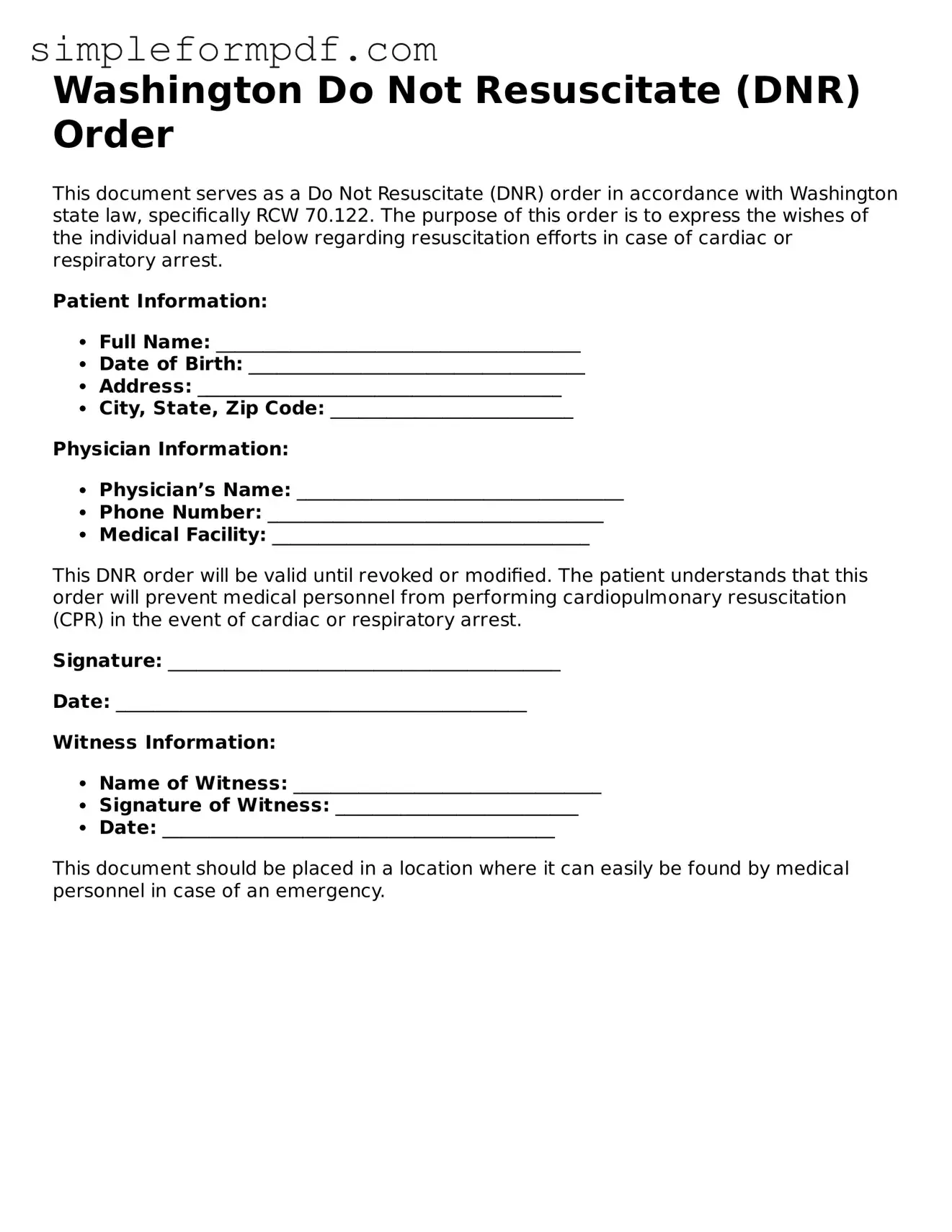Washington Do Not Resuscitate (DNR) Order
This document serves as a Do Not Resuscitate (DNR) order in accordance with Washington state law, specifically RCW 70.122. The purpose of this order is to express the wishes of the individual named below regarding resuscitation efforts in case of cardiac or respiratory arrest.
Patient Information:
- Full Name: _______________________________________
- Date of Birth: ____________________________________
- Address: _______________________________________
- City, State, Zip Code: __________________________
Physician Information:
- Physician’s Name: ___________________________________
- Phone Number: ____________________________________
- Medical Facility: __________________________________
This DNR order will be valid until revoked or modified. The patient understands that this order will prevent medical personnel from performing cardiopulmonary resuscitation (CPR) in the event of cardiac or respiratory arrest.
Signature: __________________________________________
Date: ____________________________________________
Witness Information:
- Name of Witness: _________________________________
- Signature of Witness: __________________________
- Date: __________________________________________
This document should be placed in a location where it can easily be found by medical personnel in case of an emergency.
